Exploring Sustainable Energy Technologies and Assessments
- PM
- May 20, 2024
- Edited 1 year ago
Table of Contents
Sustainable energy technologies are crucial for a greener future. This article explores these innovations and their assessments. Discover how these advancements are shaping our world. Read on to uncover the details of sustainable energy technologies and assessments.
The Importance of Sustainable Energy
Sustainable energy is crucial in combating climate change. It reduces reliance on fossil fuels. This shift is essential for a cleaner planet. Renewable sources like solar, wind, and hydro play a significant role. These technologies provide clean, efficient energy. They also create jobs and drive economic growth.
Solar Power
Solar power is a leading renewable energy source. It harnesses sunlight to generate electricity. Solar panels convert sunlight into usable energy. This technology has advanced rapidly. Panels are more efficient and affordable than ever. They can be installed on rooftops or in large solar farms.
Benefits of Solar Power:
- Reduces electricity bills.
- Lowers carbon footprint.
- Minimal maintenance is required.
- Scalable for different needs.
Solar power assessments are crucial. They evaluate the efficiency and impact of solar installations. These assessments help optimize performance and ensure sustainability.
Wind Energy
Wind energy is another critical renewable source. Wind turbines convert wind into electricity. They are often installed in wind farms, which can be onshore or offshore. Wind energy is clean and abundant and complements other renewable sources well.
Advantages of Wind Energy:
- Zero emissions during operation.
- Reduces dependence on fossil fuels.
- Generates jobs in manufacturing and maintenance.
Wind energy assessments are vital, measuring wind projects’ potential and efficiency. Proper assessments ensure optimal turbine placement and performance.
Hydro Power
Hydropower utilizes water to generate energy. It is one of the oldest renewable sources. Dams and turbines play a central role. Water flow drives turbines, producing electricity. Hydropower is reliable and efficient.
Benefits of Hydro Power:
- Constant and predictable energy source.
- Low operational costs.
- Long lifespan of infrastructure.
Hydropower assessments focus on environmental impact and evaluate water resource management. They ensure sustainable and efficient hydropower use.
Biomass Energy
Biomass energy comes from organic materials, including wood, agricultural waste, and other biological materials. It can be burned directly or converted into biofuels, making it a versatile and renewable energy source.
Advantages of Biomass Energy:
- Reduces waste by utilizing organic materials.
- It can be produced locally.
- Provides a steady energy supply.
Biomass energy assessments are essential. They analyze the sustainability and efficiency of biomass use. These assessments help manage resources and reduce environmental impact.
Geothermal Energy
Geothermal energy harnesses heat from the Earth. This heat is used to generate electricity or provide direct heating. Geothermal plants are usually located near tectonic plate boundaries. This energy source is sustainable and reliable.
Benefits of Geothermal Energy:
- Low emissions.
- Constant energy supply.
- Small land footprint.
Geothermal energy assessments evaluate site potential and impact. These assessments ensure efficient and sustainable geothermal use.
Energy Storage Solutions
Energy storage is crucial for renewable energy. It balances supply and demand. Batteries are a shared storage solution. They store excess energy for later use. This technology is advancing rapidly.
Advantages of Energy Storage:
- Enhances grid stability.
- Reduces energy waste.
- Supports renewable integration.
Energy storage assessments are necessary. They evaluate the capacity and efficiency of storage systems. Proper assessments ensure optimal performance and reliability.
Smart Grids
Smart grids are modernizing energy distribution. They use digital technology to manage electricity flow, ensuring efficient and reliable energy delivery and supporting renewable integration and energy efficiency.
Benefits of Smart Grids:
- Reduces energy losses.
- Enhances grid resilience.
- Enables real-time monitoring and management.
Competent grid assessments focus on infrastructure and technology. They ensure efficient and sustainable energy distribution.
Policy and Regulation
Policies and regulations play a crucial role in sustainable energy. They promote renewable energy use and investment. Governments set targets and provide incentives. These measures support the transition to a sustainable energy future.
Key Policy Areas:
- Renewable energy targets.
- Incentives for clean energy.
- Regulations on emissions and efficiency.
Policy assessments evaluate the effectiveness of these measures. They help shape policies that drive sustainable energy adoption.
Conclusion
Sustainable energy technologies are transforming our world. These innovations offer a greener future, from solar and wind to hydro and biomass. Assessments ensure these technologies are efficient and sustainable. They help optimize performance and reduce environmental impact.
At Martin Global Renewables, we are committed to advancing these technologies. We provide comprehensive assessments to support your sustainable energy projects. Contact us to learn more about our services.
Join us in building a sustainable future. Comment below with your thoughts. Share this post with your network. Explore our services to discover how we can help you achieve your energy goals. Together, we can power a brighter tomorrow.
Read More:
Cutting-Edge Cooling Technologies


Find out more about what MGR is doing.